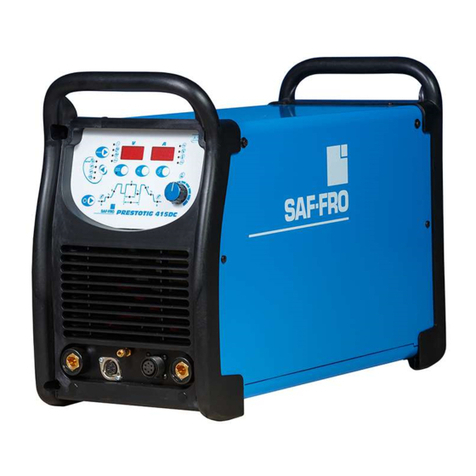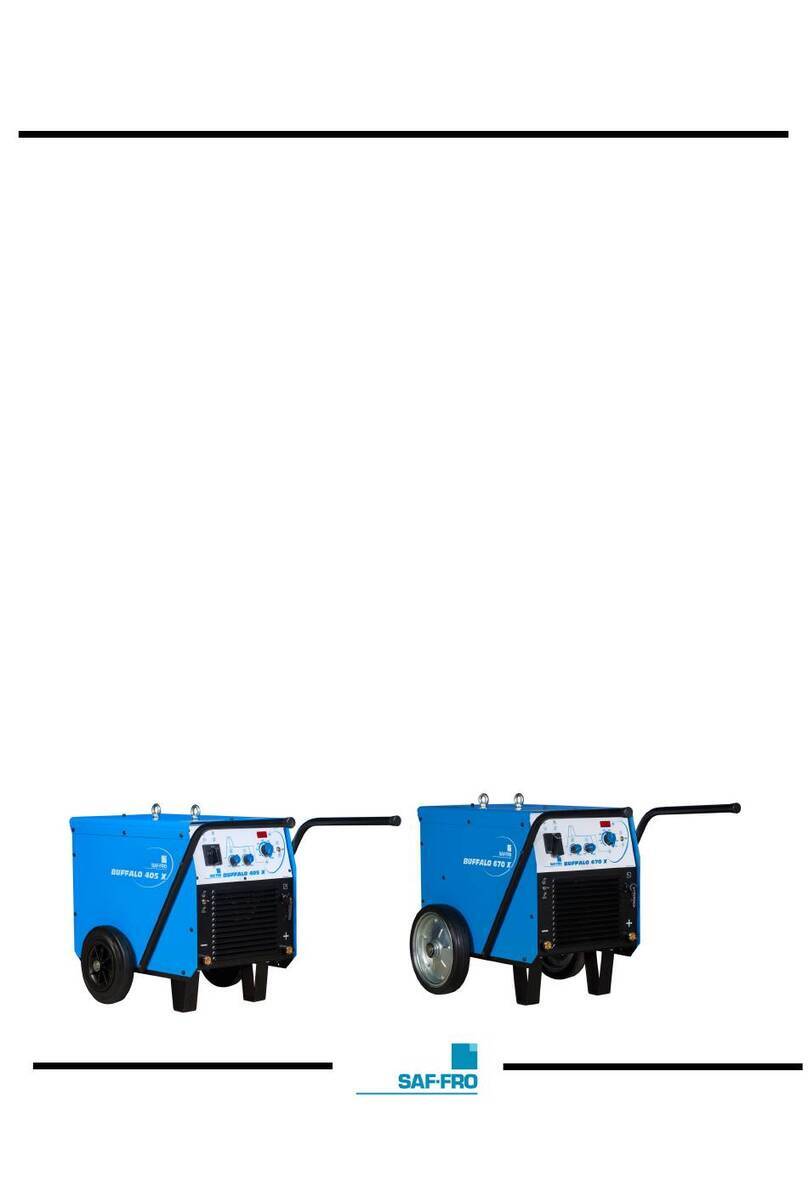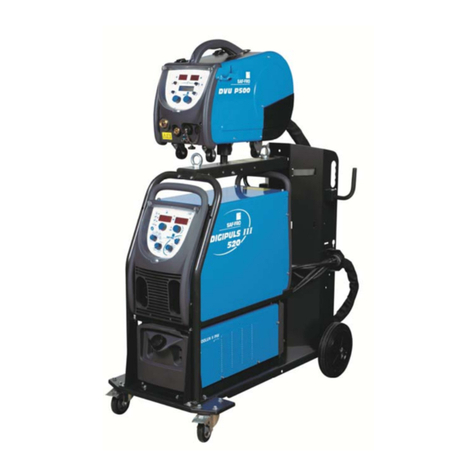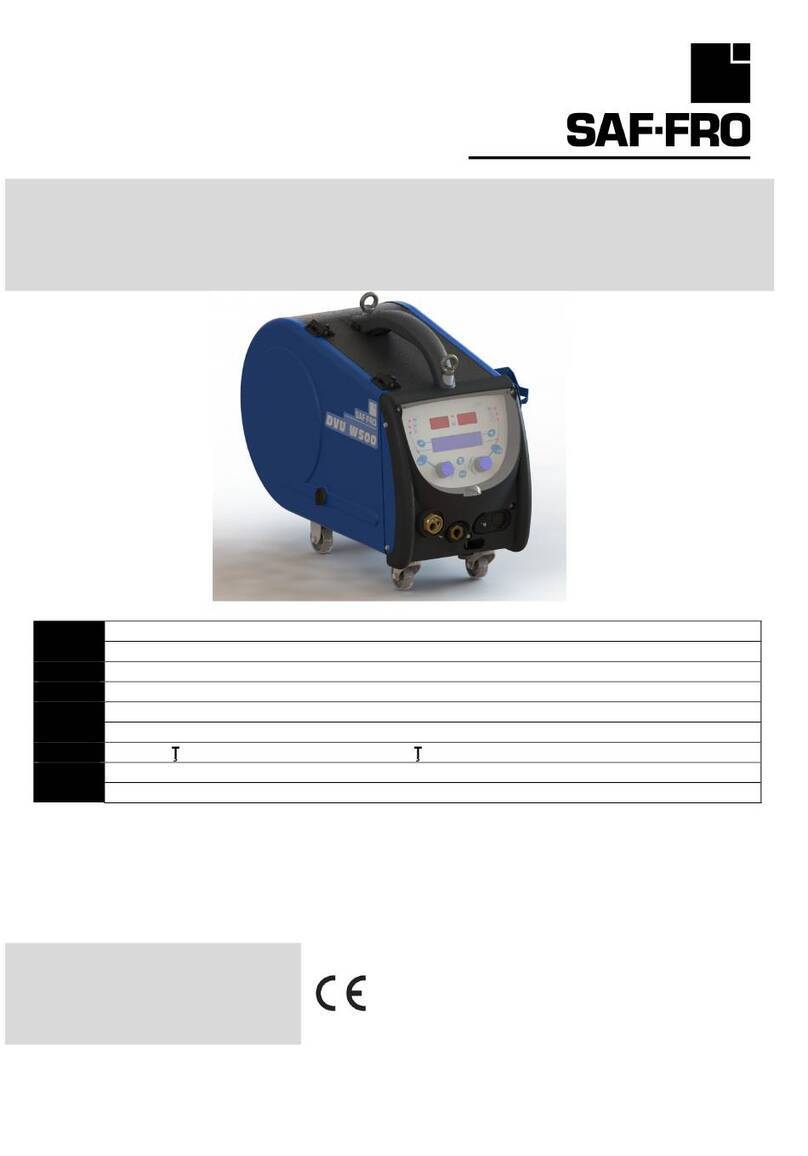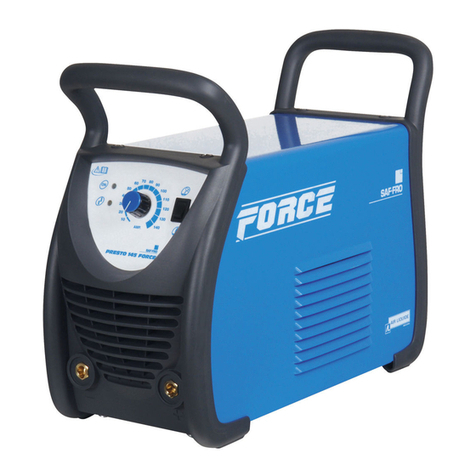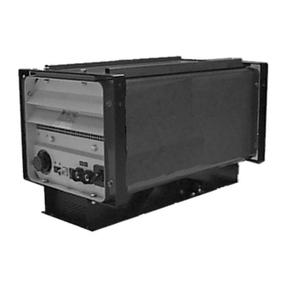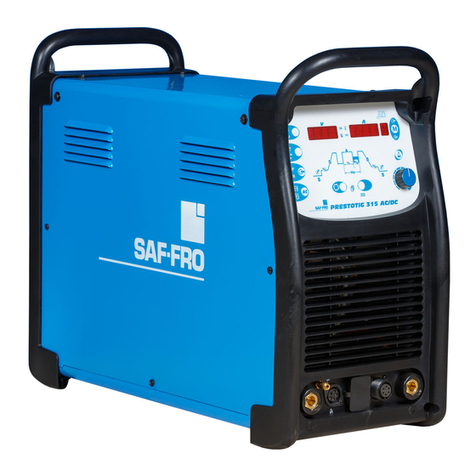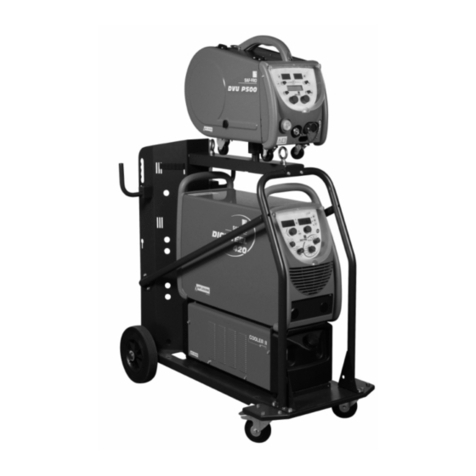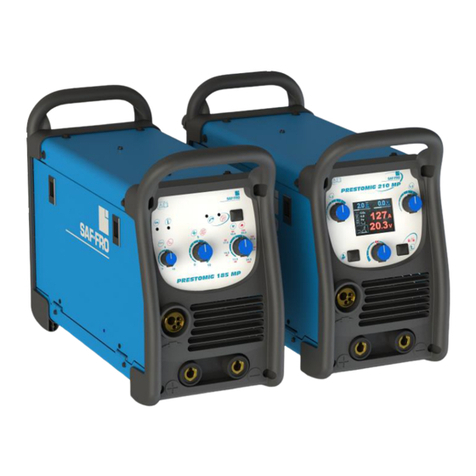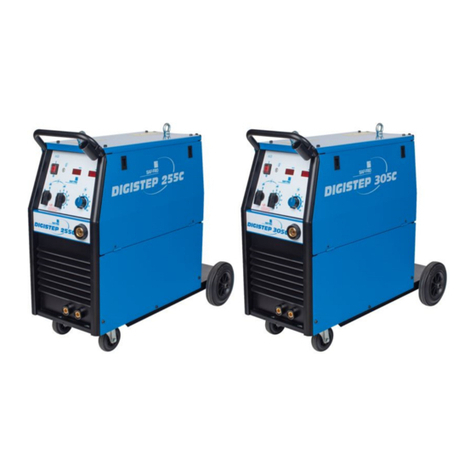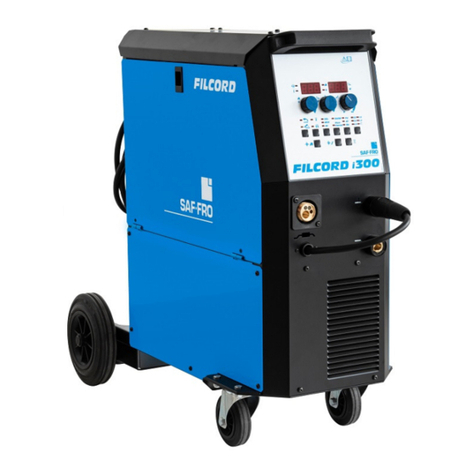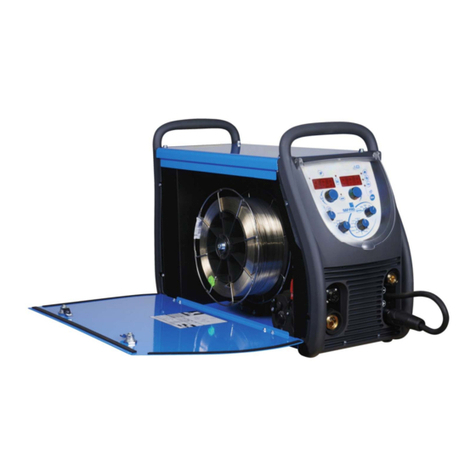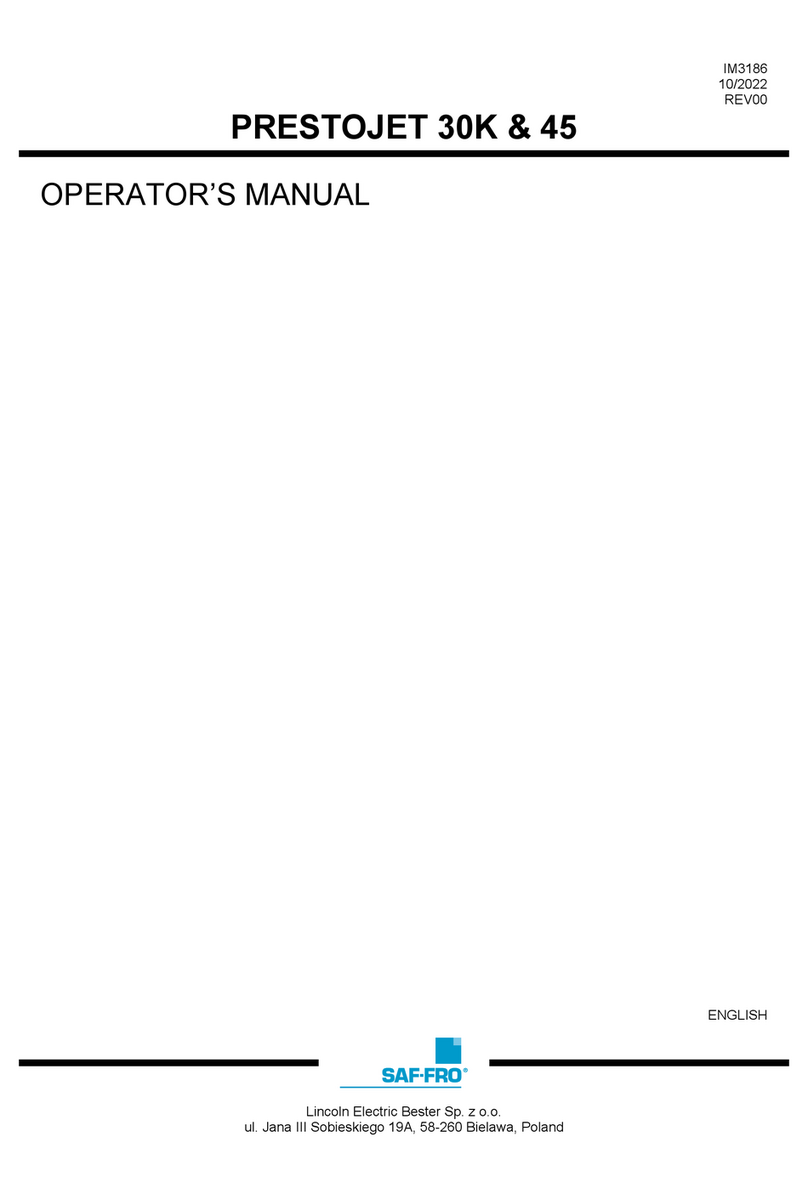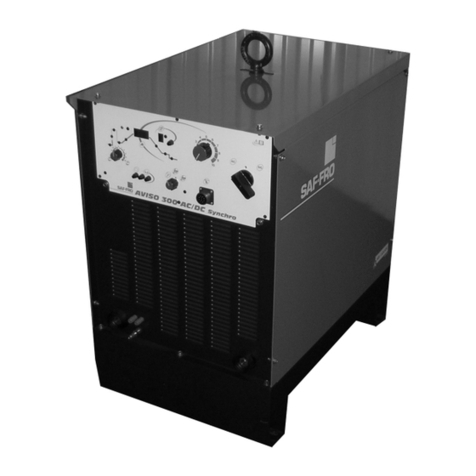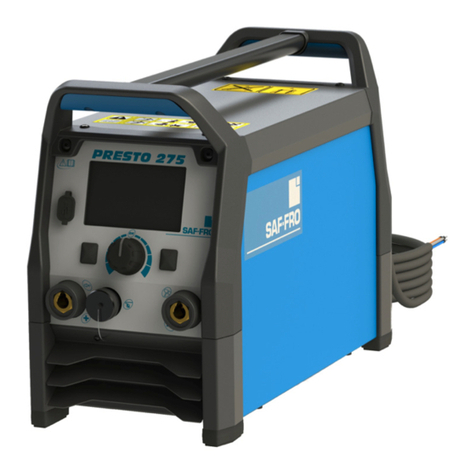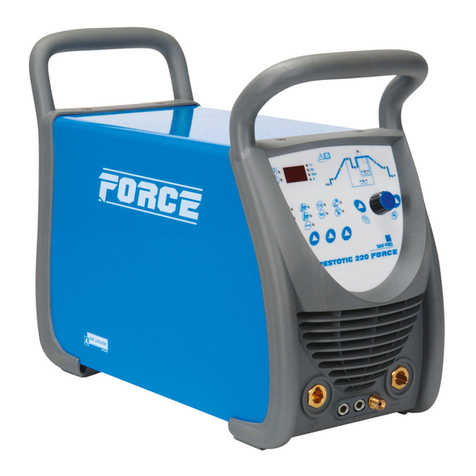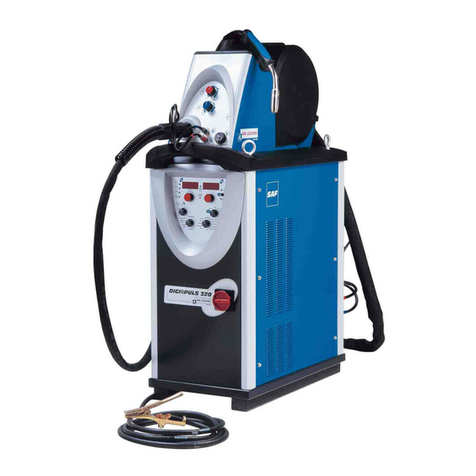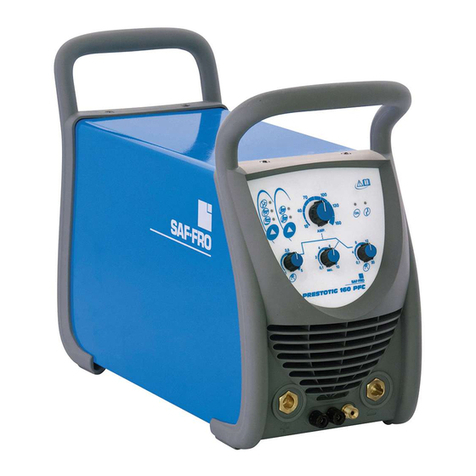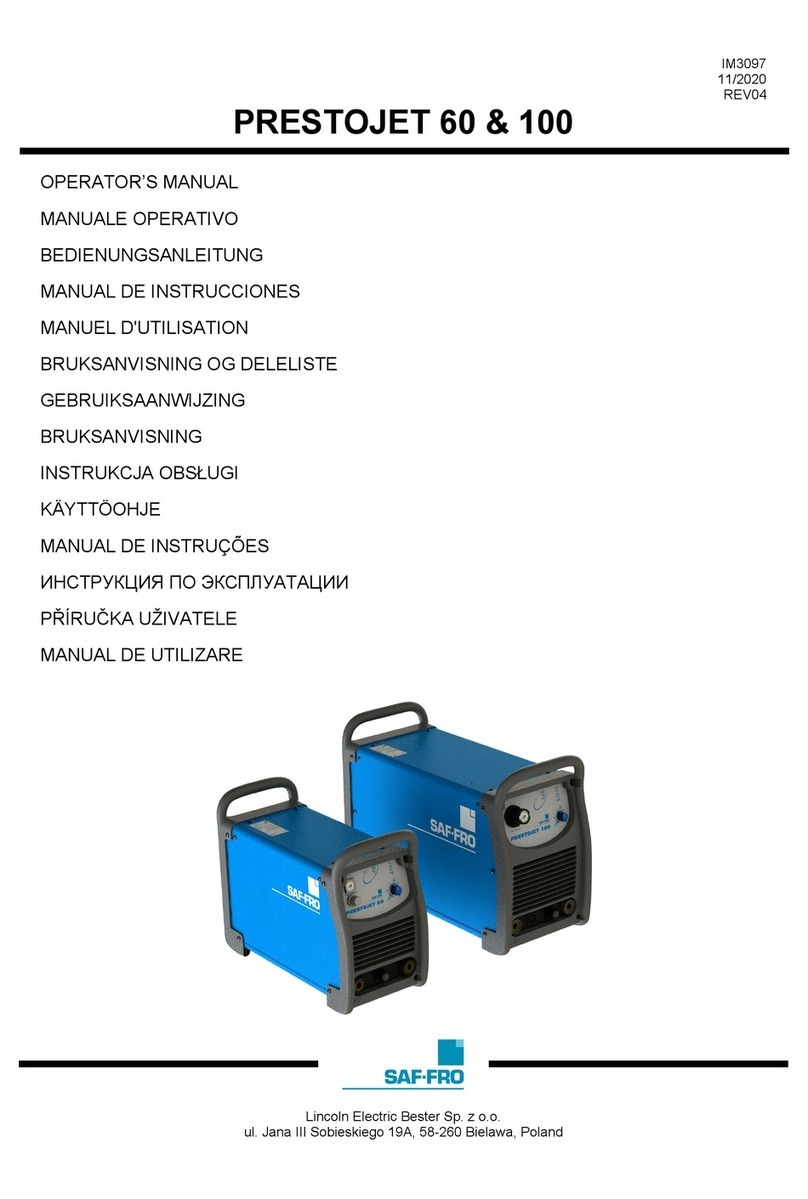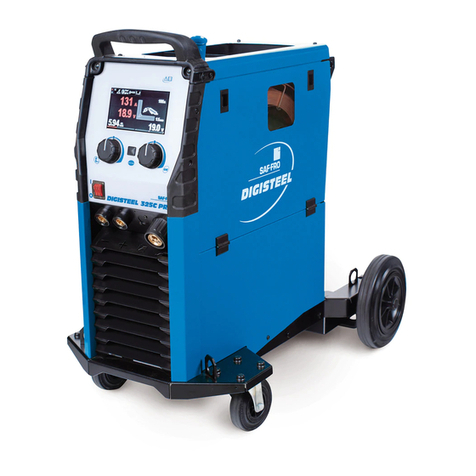The Plasma Jet is obtained by the combined effect of a
continuous electric arc and a flow of gas. the thermal and kinetic
energy of the column of ionized gas, or plasma, melts the
material to be cut and ejects it from the groove.
For torch JET CP 4.0 CENTRAL, the gas used is compressed
air, which acts simultaneously as cooling agent and as plasma-
form-ing gas.The torch is built round the two main components
which generate the plasma:
1. The electrode, which is the source of cathodic emission and
the root of the arc,
2. The nozzle, which constricts and ejects the plasma and, as
a secondary function, acts as the anode during the pilot arc
phase.
3. The different parameters are often interdependent and
influ-ence the results of the cutting operation:
4. The diameter of the nozzle must be matched to the
generator power (current) selected.
5. The speed of advance is applied by the operator as a
function of the thickness to be cut and the power selected.
For PLASMAJET equipment, the nature and flow rate of the
gas are fixed from the start: the flow rate results from the
feed to the installation of compressed air at 4.5 to 5.5 bars.
A reduc-tion of the pressure, within this adjustment band,
optimizes cutting of thicker materials.
6. As a general rule, High power, selected as a function of the
thickness to be cut, enables high cutting speeds, with
conse-quent:
- reduction (or disappearance) of adherent dross,
- reduction of the "Heat Affected Zone",
- increased quantity of material removed,
- increased production of smoke.
- Increasing the power tend to increase the width of the cut.
For the PLASMAJET - Parts may be up to 10 mm for contact
cut-ting.
3.0 OPERATION
3.1 FITTING COMPONENTS
Choose a nozzle as a function of the type of generator, the
current range selected and the type of work to be done; choose
an elec-trode and a skirt/shoe to go with it see tables:
1. The elements: Electrode (1) Nozzle (2) are fitted to the torch
using the multi-purpose wrench only and applying a moder-
ate tightening torque.
2. Screw the skirt (3) on to the torch body; it has to be present
to validate the "Safety" function of the generator.
3.2 USE FOR CUTTING
It is possible to ignite the pilot arc in the air. Make sure not to direct
the nozzle at anyone or at anything but the object to be cut.
To ignite the arc, simply operate the safety trigger. This requires
two movements:
1. Slide it longitudinally to unlock it
2. Press sideways to actuate the breaker.
To start on thin parts, no special precautions are necessary:
posi-tion the torch on the workpiece, at the starting point, actuate
the trigger and piercing will be immediate; on the other hand, for
thick-er parts, there is a risk of damage from rebounding
particles of metal, to both the nozzle and the skirt. As far as
possible, then, start the cut at the edge of the sheet.
In other cases, where starting in the middle of the sheet cannot be
avoided, set a limit of not more than 1/3 of the maximum capacity of
the range. Incline the torch slightly and move it gently during the
transfer in order to allow the particles to be ejected laterally
If the results of the cut are unsatisfactory:
1. Adapt the cutting speed to the thickness being cut,
2. Check that the nozzle and electrode are in good condition.
3. If necessary, choose a different power range.
To achieve a regular cutting trajectory, it is possible to press the
end of the torch against a template or rule. if a long nozzle is
used with a metal rule, be sure to interrupt the arc on leaving the
work, to prevent it from remaining ignited due to contact between
the nozzle and the rule, with risk of damage to the channel.
Before carrying out any operation on the torch, after cutting, wait
for the after-gas to finish flowing to allow the nozzle to cool. If
nec-essary, actuate the after-gas a second time to complete the
cool-ing process.
WARNING. WHEN THE ARC IS IGNITED IN THE MIDDLE OF
A WORK PIECE, PARTICLES OF METAL MAY BE EJECTED
UP-WARDS ONTO THE NOZZLE AND DAMAGE IT. TO AVOID
THIS, ORIENT THE TORCH SO THAT THE PARTICLES CAN
ESCAPE SIDEWAYS. PERFORM THE CUT, KEEPING THE
STARTING POINT IN THE WASTE.
3 EN
